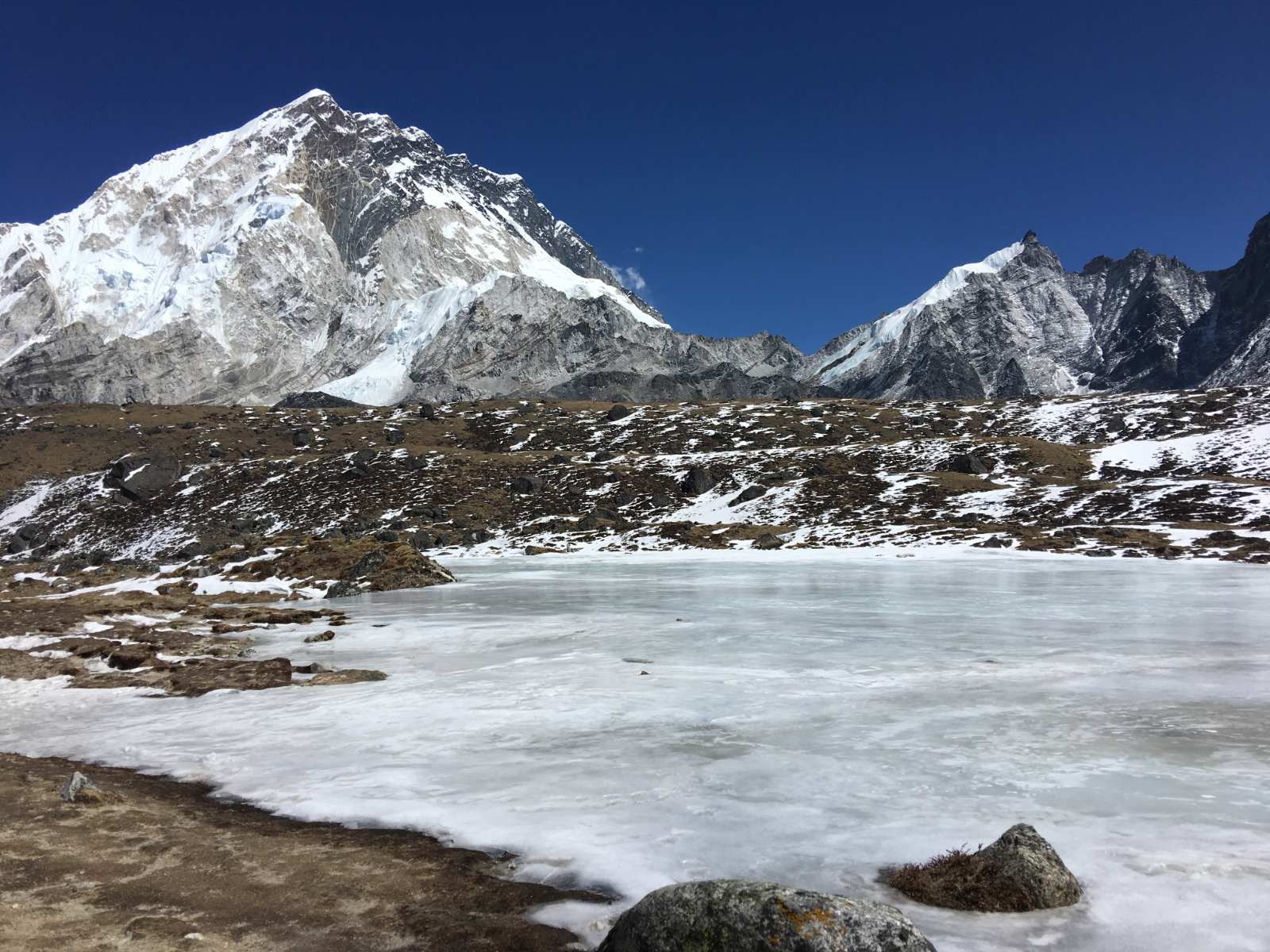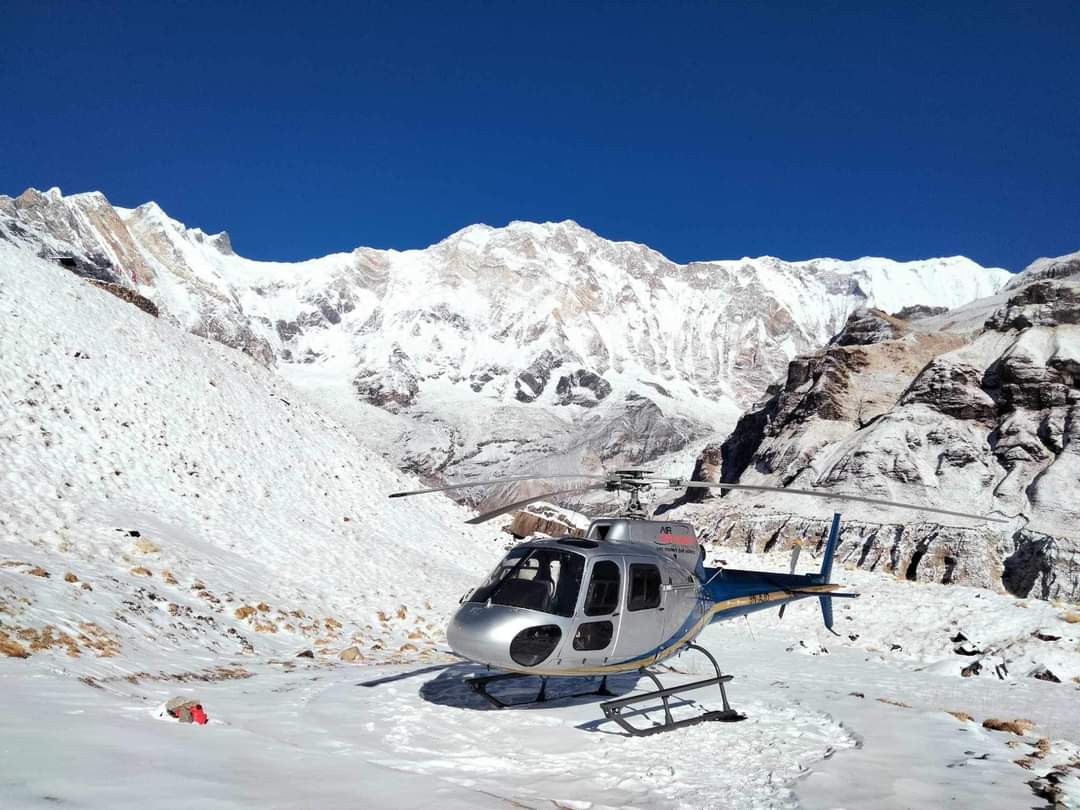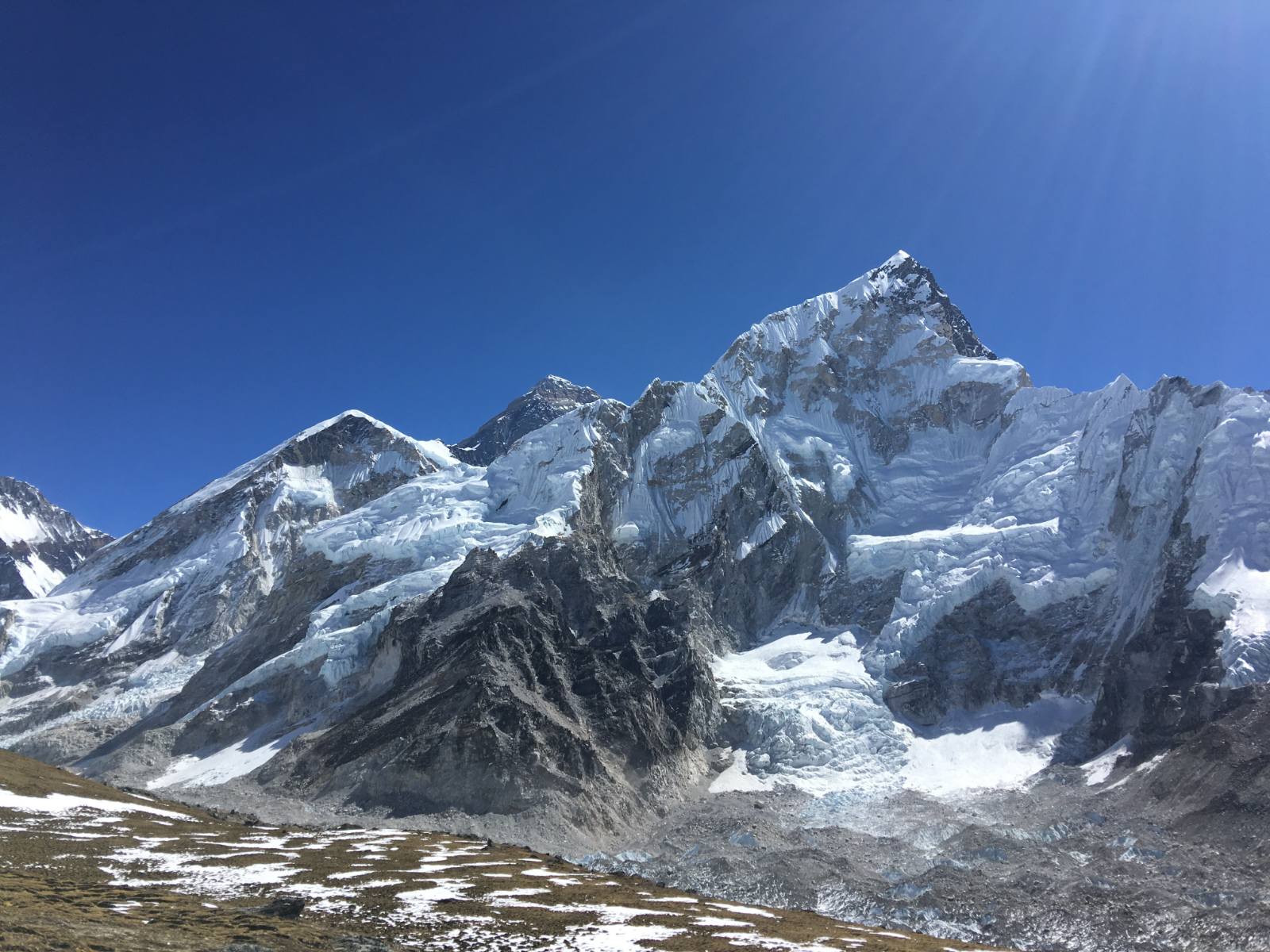Kathmandu Guided City Tour
Kathmandu guided city tour includes four major UNESCO world heritage sites in Kathmandu valley, major civilizational attractions. These four sites give you wonderful insights to various aspects of different religious/spiritual/historical segments of Nepalese society in both past and present. Swoyambhunath tells you the story of how present day Kathmandu valley, then Nag Daha (Snake Lake), was converted in to wonderful place of human settlement from Himalayan Buddhist’s perspective. Patan Durbar square is a reflection of magnificent arts and architecture that existed in and around the valley in the recent and distant past. Pashupatinath temple narrates you the tale of Sanatan dharma (understood as present day Hinduism) in Kathmandu valley as to how it originated and evolved throughout various time periods. It also illustrates how this site is profoundly linked to all Hindus worldwide. Bouddha Stupa represents another facet of Himalayan Buddhism and its evolution throughout the history and also gives you a clear picture of how Tibet and Nepal are deeply connected through this site.
1. Discovering Swayambhunath Stupa (Monkey Temple): A Sacred Landmark
Legend has it that the Kathmandu Valley was once an enormous lake known as Nagdah, from which a lotus with a five-colored flame emerged. This lotus transformed into the hill upon which the stupa now stands, symbolizing the "Self-Created" flame of enlightenment. The stupa itself is believed to enshrine the original self-arisen flame beneath its dome.
Highlights of Swayambhunath:
Historical & Religious Significance
- Swayambhunath is among the oldest religious sites in Nepal, visited by Buddhists and Hindus alike. Praised by Buddha and meditated upon by many enlightened beings, it is a pure and holy site.
- The stupa represents Buddha's mind, offering peace, freedom, and the path to enlightenment.
Architectural Beauty & Spiritual Elements
Panoramic Views & Attractions
- Perched at one of the highest points in the Kathmandu Valley, Swayambhunath offers breathtaking panoramic views of the city.
- Visitors will find three golden statues of Sakyamuni Buddha, Chenresig (Avalokiteshvara), and Guru Rinpoche, built in 2003.
Cultural Features
- The site has 365 steps leading directly to the temple, as well as a vehicle-accessible road to the southwest entrance.
- Numerous shrines, statues of Tantric deities, and prayer wheels dot the area, representing deep spiritual tradition.
- The Swayambhu Buddhist Museum, located near the stupa, showcases a collection of Buddhist statues and artifacts.
- Monasteries around the site display fine Buddhist paintings, huge prayer wheels, and Nepal’s largest Buddha statue.
Hariti Temple (Ajima Temple)
- This gilded, two-tiered Newari-style temple is dedicated to Hariti, the goddess of child protection, health, and wealth.
Unique Experience at Swayambhunath
- Visitors to Swayambhunath walk around the stupa while reciting mantras, turning prayer wheels, and making offerings. The peaceful ambiance, coupled with the spiritual energy, offers a unique sense of faith, harmony, and joy.
Whether you're drawn by its religious importance, architectural splendor, or panoramic views, Swayambhunath Stupa stands as a timeless icon of Nepal’s rich cultural heritage.
2. Pashupatinath Temple: A Sacred Hindu Pilgrimage Site in Kathmandu
Nestled on the banks of the holy Bagmati River, the Pashupatinath Temple stands as one of the most sacred Hindu temples in Nepal and a significant pilgrimage site for Hindus worldwide. This revered temple, dedicated to Lord Shiva, is not only a spiritual hub but also a center of cultural and architectural brilliance. Every year, it attracts hundreds of thousands of devotees, especially during festivals like Maha Shivaratri and Teej, when the temple complex comes alive with vibrant celebrations and rituals.
A Spiritual Haven for Devotees
Pashupatinath Temple holds immense religious significance for Hindus. It is believed that a visit to this temple brings spiritual liberation (Moksha) and blessings from Lord Shiva. The temple is particularly popular among elderly devotees, who come here to spend their final days in devotion and prayer. The serene ambiance of the temple, combined with the sacred waters of the Bagmati River, creates a deeply spiritual atmosphere.
Architectural Marvel and Artistic Grandeur
The temple is a masterpiece of Nepalese pagoda architecture. Its two-storied structure features:
- Cubic constructions with intricately carved wooden rafters.
- Two-level roofs made of copper and gold, symbolizing grandeur and divinity.
- A five-faced statue of Lord Shiva, representing his various forms and attributes.
The Pashupatinath complex is not limited to the main shrine. It houses numerous smaller temples dedicated to different gods and goddesses, each showcasing unique architectural styles such as Dome style, Pagoda style, and Shikhara style. The temple complex is a treasure trove for art historians, featuring:
- Exquisite statues and sculptures made of stone, metal, and wood.
- Beautifully carved doors and pillars adorned with depictions of gods, goddesses, and mythical creatures like griffins.
A Center of Festivals and Celebrations
- Pashupatinath Temple is the epicenter of major Hindu festivals, including:
- Maha Shivaratri: A night dedicated to Lord Shiva, celebrated with night-long vigils, prayers, and offerings.
- Teej: A festival where women fast and pray for the well-being of their husbands and families.
The Sacred Bagmati River
The Bagmati River, flowing beside the temple, is considered holy and is an integral part of the rituals performed here. The riverbanks are lined with ghats (stone steps), where cremation ceremonies take place. Witnessing these rituals offers a profound insight into the cycle of life and death in Hindu philosophy.
Journey to Boudhanath Stupa
After exploring the spiritual and architectural wonders of Pashupatinath Temple, your journey continues to Boudhanath Stupa, located just 2.3 kilometers away (approximately a 15-minute drive). This transition from a Hindu pilgrimage site to a Buddhist spiritual hub offers a unique opportunity to experience the religious diversity and cultural richness of Kathmandu.
Why Visit Pashupatinath Temple?
Spiritual Significance: A visit to Pashupatinath is believed to bring blessings and spiritual liberation.
Architectural Beauty: The temple’s pagoda-style architecture and intricate carvings are a treat for art and history enthusiasts.
Cultural Experience: Witnessing the rituals, festivals, and daily life around the temple provides a deep understanding of Hindu traditions.
Sacred Atmosphere: The serene environment and the holy Bagmati River create a peaceful and meditative ambiance.
Overall, Pashupatinath Temple is more than just a religious site; it is a symbol of Nepal’s spiritual and cultural heritage. Whether you’re a devout Hindu, an art lover, or a curious traveler, this sacred temple offers a unique and enriching experience. From its architectural grandeur to its spiritual energy, Pashupatinath Temple is a place where history, culture, and devotion come together in perfect harmony. Don’t miss the chance to explore this UNESCO World Heritage Site and immerse yourself in the timeless traditions of Hinduism.
3. Patan: A Medieval City of Art, Culture, and Spirituality
Nestled in the heart of the Kathmandu Valley, Patan is one of the three medieval cities of Nepal and a treasure trove of art, culture, and history. Known as the City of Fine Arts, Patan is home to hundreds of fascinating Hindu and Buddhist monuments, each telling a story of the city’s glorious past. With its palace buildings, artistic courtyards, and former palace complexes, Patan offers an enchanting blend of architectural brilliance and spiritual heritage. Most of its monuments date back to the Malla period (15th to 17th century), often regarded as the golden era of Nepalese art and architecture.
A Living Museum of Art and Architecture
Patan is a living testament to Nepal’s rich cultural and artistic legacy. The city’s streets are lined with intricately carved temples, ancient monasteries, and historic courtyards, each showcasing the exceptional craftsmanship of the Newari people. The city’s monuments are not just relics of the past but are still actively used by locals and pilgrims, making Patan a living history.
Key Highlights of Patan
Krishna Mandir:
This stone temple, dedicated to Lord Krishna, is one of the most iconic landmarks in Patan. Built in the 17th century, the temple features 21 spires and exquisite bas-relief art depicting scenes from the Mahabharata and Ramayana epics. Its unique Shikhara-style architecture and intricate carvings make it a masterpiece of Nepalese art.
Golden Temple (Hiranya Varna Mahavihar):
A Buddhist monastery adorned with golden facades, the Golden Temple is a stunning example of Newari craftsmanship. The temple houses beautiful statues of Buddha, prayer wheels, and ancient scriptures, offering a serene and spiritual atmosphere.
Rudravarna Mahavihar:
This ancient Buddhist monastery is known for its wooden carvings and religious significance. It is a place where the Bajrayana tradition of Newari Buddhism is practiced, showcasing the unique blend of Buddhist and Hindu traditions in the Kathmandu Valley.
Patan Mahabuddha:
Also known as the Temple of a Thousand Buddhas, this terra-cotta temple is an exemplary Buddhist monumental site. Each brick of the temple is engraved with an image of Buddha, symbolizing the universal presence of enlightenment.
The Golden Era of Malla Dynasty
The Malla period is often referred to as the golden age of Nepalese art and architecture, and Patan is a shining example of this legacy. The city’s monuments reflect the artistic excellence and spiritual devotion of the Malla kings, who were great patrons of art and culture. The palace complexes, courtyards, and temples built during this period are adorned with wooden carvings, metalwork, and stone sculptures, showcasing the unparalleled skills of Newari artisans.
4. Patan: A Center of Wooden and Metal Artifacts
Patan is renowned for its traditional craftsmanship, particularly in wooden and metal artifacts. The city is a hub for Thanka paintings, statues, ritual objects, and handicrafts, making it a paradise for art lovers and collectors. The Newari artisans of Patan have preserved their ancient techniques, creating masterpieces that are admired worldwide.
The Spiritual and Cultural Essence of Patan
Patan is not just a city of art and architecture; it is also a spiritual and cultural hub. The city’s Buddhist monasteries and Hindu temples coexist harmoniously, reflecting the religious diversity of Nepal. The Bajrayana tradition, a unique form of Newari Buddhism practiced in the Kathmandu Valley, adds to the city’s spiritual charm. The stories behind the development of Buddhism and its various segments, such as Bajrayana, are deeply rooted in Patan’s history and culture.
Why Visit Patan?
- Art and Architecture: Explore the stunning temples, palaces, and courtyards that showcase the golden era of Nepalese art.
- Spiritual Heritage: Experience the harmonious blend of Hindu and Buddhist traditions in a city that is a living museum of spirituality.
- Cultural Immersion: Witness the traditional craftsmanship of Newari artisans and learn about the history and stories behind the monuments.
- Living History: Walk through the streets of Patan and experience a city where history, culture, and daily life intertwine.
Overall, Patan is a must-visit destination for anyone traveling to Nepal. Whether you’re an art enthusiast, a history buff, or a spiritual seeker, this medieval city offers a unique and enriching experience. From the intricate carvings of Krishna Mandir to the golden facades of Hiranya Varna Mahavihar, Patan is a city that will leave you in awe of its artistic brilliance and cultural heritage. Don’t miss the chance to explore this UNESCO World Heritage Site and immerse yourself in the timeless beauty of Patan.
4. Boudhanath Stupa: A Spiritual and Cultural Gem in Kathmandu
As you step into the serene surroundings of Boudhanath Stupa, you’ll immediately feel a sense of calm and peace. The rooftop restaurants surrounding the stupa offer the perfect spot to enjoy a cup of coffee while soaking in the tranquil ambiance. From here, you can gaze at the majestic stupa, its unblinking eyes staring into the four directions, and feel the spiritual energy that emanates from this sacred site.
The Sacred Heart of Tibetan Buddhism
Boudhanath Stupa is the largest and most sacred Tibetan Buddhist site outside of Tibet, making it a religion and culture hub for Tibetans and people from the Himalayan regions of Nepal. Located on the ancient trade route from Tibet, this UNESCO World Heritage Site holds immense historic and architectural significance. The stupa is believed to house the relic of Kasyapa Buddha, the third Buddha of the Bhadrakalpa, adding to its spiritual importance.
The Legend of Boudhanath Stupa
The story of Boudhanath Stupa is as fascinating as its architecture. It is said that the stupa was built by Jyajhima, a poor poultry woman, who had an intense desire to construct a stupa despite her poverty. She completed the dome-like structure (the vase) before passing away. Her four sons took over and completed the rest of the stupa. After finishing the construction, they stood before it and offered prayers. Legend has it that during their prayers, all the Buddhas and Bodhisattvas were absorbed into the stupa, earning it the name “All-Encompassing.”
Architectural and Symbolic Significance
The stupa’s design is a masterpiece of Buddhist symbolism:
The semicircular white dome and towering spire represent a Buddhist mandala, symbolizing the cosmological map and the path to enlightenment.
The four Dhyani Buddhas mark the cardinal directions, while the fifth, Vairocana, is enshrined in the central white hemisphere.
The three large platforms at the base symbolize the stages of spiritual progress.
The 13-step pyramid atop the square tower represents the stages one must pass through to achieve Nirvana.
The triangular shape of the spire symbolizes the element of fire.
Every part of the stupa—base, dome, spire, and pinnacle—represents the five elements (earth, water, fire, air, and space).
The stupa is also believed to contain a piece of bone from Siddhartha Gautama, the historical Buddha, adding to its sacredness.
A Hub of Spiritual Energy
Boudhanath Stupa is not just an architectural marvel; it is a living center of spirituality. The base of the stupa features 108 images of Dhyani Buddha and 147 niches housing prayer wheels. The prayer flags tied around the stupa carry mantras and prayers toward heaven, creating a powerful spiritual atmosphere.
The sound of singing bowls, the hum of Buddhist chants, and the aroma of burning incense create a healing energy that envelops visitors. Early mornings and evenings are particularly magical, as Buddhist monks in maroon robes circumambulate the stupa, turning prayer wheels and chanting mantras.
A Cultural and Spiritual Experience
Boudhanath is more than just a stupa; it’s a cultural and spiritual hub. The periphery of the stupa is lined with shops selling Thanka paintings, ritual objects, and handicrafts, offering a glimpse into the rich artistic traditions of the region. The area is also home to numerous monasteries and meditation centers, where visitors can learn about Buddhist philosophy, meditation, and the lives of monks and nuns who dedicate themselves to simplicity and non-violence.
Why Visit Boudhanath Stupa?
Spiritual Connection: The serene and peaceful environment makes it an ideal place for meditation and spiritual reflection.
Cultural Immersion: Explore the rich traditions of Tibetan Buddhism and the artistic heritage of the region.
Architectural Marvel: Witness the intricate design and symbolism of one of the largest stupas in the world.
Healing Energy: The combination of chanting, incense, and prayer creates a unique and uplifting atmosphere.
Overall, Boudhanath Stupa is a must-visit destination for anyone traveling to Kathmandu. Whether you’re seeking spiritual solace, cultural exploration, or simply a peaceful retreat, this sacred site offers an unforgettable experience. From its legendary origins to its architectural grandeur and spiritual energy, Boudhanath Stupa is a place where history, culture, and spirituality come together in perfect harmony. Don’t miss the chance to immerse yourself in the magic of this UNESCO World Heritage Site and discover why it’s considered one of the most sacred places in the Buddhist world.




